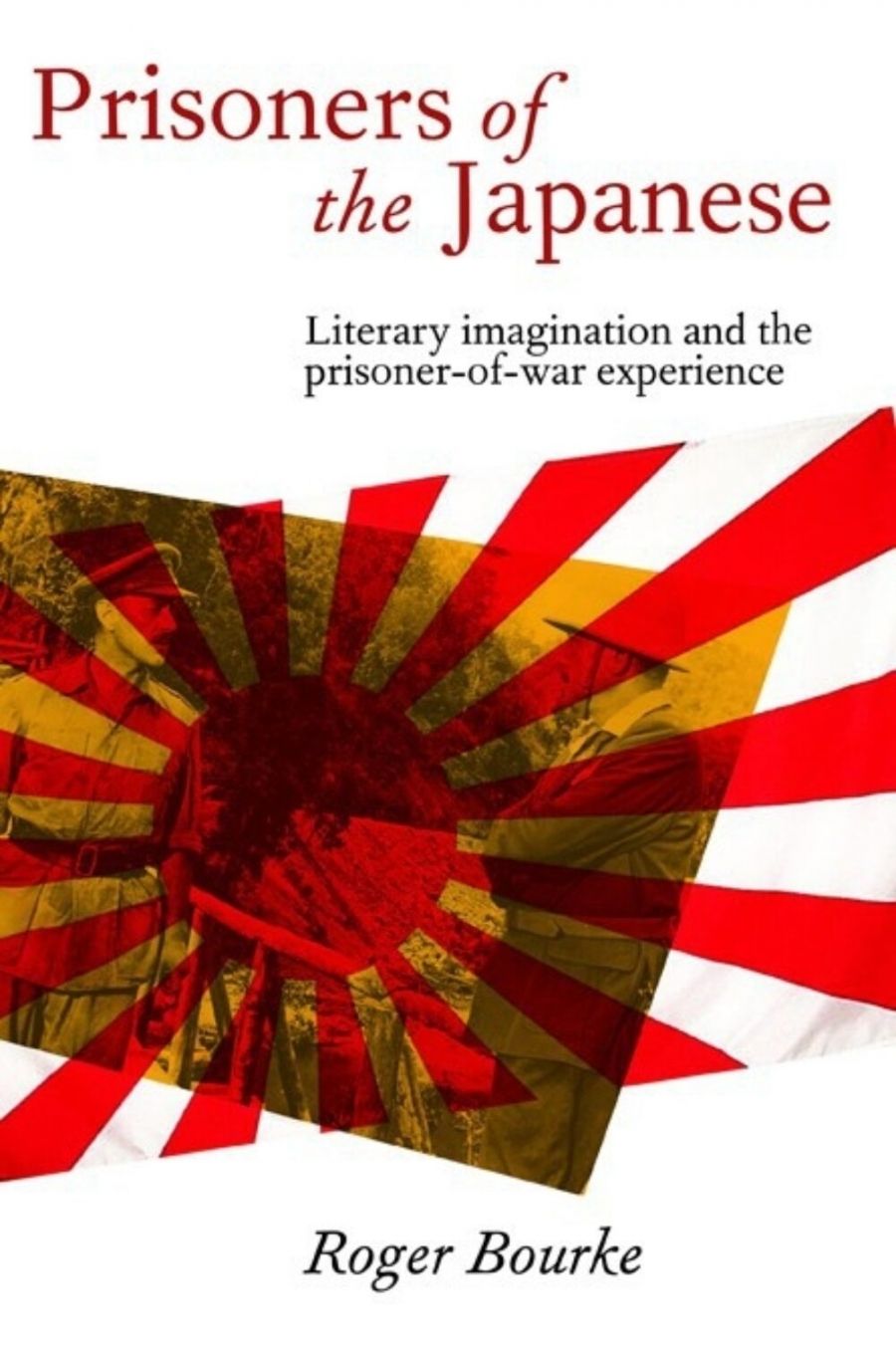
- Free Article: No
- Contents Category: War
- Review Article: Yes
- Online Only: No
- Custom Highlight Text:
When it was first published, Tasmanian army nurse and prisoner of war Jessie Simons entitled her memoir of captivity While History Passed (1954). It was reissued as In Japanese Hands (1985). This was one of the numerous autobiographical works produced after their ordeal by POW survivors, whether they were driven by an enduring hatred of their captors (Rohan Rivett, Russell Braddon) or by a striving for forgiveness (Ray Parkin). In his study of ‘Literary imagination and the prisoner-of-war experience’, Roger Bourke has turned instead to what he regards as the neglected area of fiction (sometimes autobiographically tinged) of captivity by the Japanese in World War II. His range encompasses British as well as Australian authors. He is particularly concerned with what the film industry made of such novels as Neville Shute’s A Town Like Alice (book 1950, film 1956), Pierre Boulle’s The Bridge on the River Kwai (1954, 1957), James Clavell’s King Rat (1962, 1965) and J.G. Ballard’s Empire of the Sun (1984, 1987).
- Book 1 Title: Prisoners of the Japanese
- Book 1 Subtitle: Literary imagination and the prisoner-of-war experience
- Book 1 Biblio: UQP, $45 pb, 223 pp
Bourke argues that although literary attention and approval has been extended to the POW memoirs, postwar generations ‘have almost certainly constructed their understanding of the prisoner-of-war experience under the Japanese largely from its popular fiction’. That this understanding – whether of bridge-building on the Kwai and the collaborative role of the novel’s British senior officer, Colonel Nicholson (played by Alec Guinness in the film), or Clavell’s depiction of the Changi prison camp – might be historically inaccurate is another of Bourke’s contentions. He travels in numerous other directions as well, some tantalising, not all fully explored.
He notes the likeness between captivity narratives that involve nineteenth-century convict transportees and those that involve POWs of the 1940s. Following Paul Fussell’s books about the literary issues of the two world wars, Bourke notes the intense literariness of some POW texts: Dante’s Divine Comedy and the Bible for the atheist Primo Levi’s accounts of Auschwitz; Defoe’s Robinson Crusoe in the description of how prisoners, like the castaway, ‘went to extraordinary lengths in their attempts to recreate ... a makeshift, improvised version of their previous, civilised existence’. Disagreeing with Fussell’s belief that World War II literature evinces a ‘laconic refusal to reach out for any myth’, Bourke analyses the long Western tradition of the prisoner as Christ figure, the prison as tomb, imprisonment as a temporary death, release as resurrection.
On this tack, he turns to Shute’s novel and to the much less well-known No Time To Look Back (1951), by Leslie Greener. The latter – an author, artist and archaeologist after the war, in Tasmania and the Middle East – is one of those fugitive, eccentrically talented individuals to whom Australian cultural history has paid too little attention. Greener was a POW: hence his novel was, in Bourke’s terms, ‘experienced’, whereas Shute’s was ‘researched’. In Greener’s curious novel, Andros is a Christ figure; in Shute’s, Joe Harman survives a crucifixion, although, in the Magdalene role, Jean Paget for a long while does not realise that he has. Bourke writes astutely about the different staging of this scene in book, film and television miniseries. He begins a fascinating discussion of Western notions of chivalry and Japanese bushido, but feels constrained to break it off and reach for the Kwai.
Again, he has rich and rarely mined material at hand. Why did Boulle – who was a prisoner of the Vichy French in Vietnam – write about British POWs? Historical context provides the answer, as elsewhere; and Bourke expresses his indebtedness to critic and POW Ian Watt for this kind of interpretation. Bourke’s own efforts to set works within, and detach them from, their contexts are mostly deft, although fewer and longer discussions may have been desirable. One digression is welcome: Boulle won an Oscar for a best adapted screenplay of which he did not write a word, which left the enraged director and producer (David Lean and Sam Spiegel, respectively) shaking their Oscars at each other.
Watt was an Englishman who left to work in California; so too Clavell. The former wrote The Rise of the Novel (1957), whose account of Crusoe, Bourke convincingly explains, draws on Watt’s experience of captivity. Clavell became a screenwriter, credited with one of the most famous of POW films, The Great Escape (1963). Bourke is especially good at this recasting of the grand narrative of Japanese captivity, so that the familiar contours – for Australian readers – are significantly modified. For instance, he introduces Englishman David Piper’s Trial by Battle (1959) and explains how the author was stimulated by attending the premiere of Waiting for Godot in 1955. The play was, for him, ‘a near-perfect statement of the prisoner’s condition of suspension in stagnant time’. Bourke also quotes Frenchman André Malraux’s judgment on the literature apt for a comprehension of the POW condition: ‘only three books, Robinson Crusoe, Don Quixote, and The Idiot, retained their truth for those who had seen prisons and concentration camps’.
Prisoners of the Japanese is full of such provocations to further reading and thought. They come from the evidence that Bourke has assembled, rather than from a firmly developed thesis. The book is essentially an illuminating survey. Its increasing repetitiveness is perhaps a sign that no controlling argument has been generated from the author’s research. Nevertheless, Bourke has expanded our knowledge and piqued our curiosity about a primal moment that abides not only in the Australian consciousness but in those of the other nationalities that fell into the durance signalled by the baleful title of this book.


Comments powered by CComment